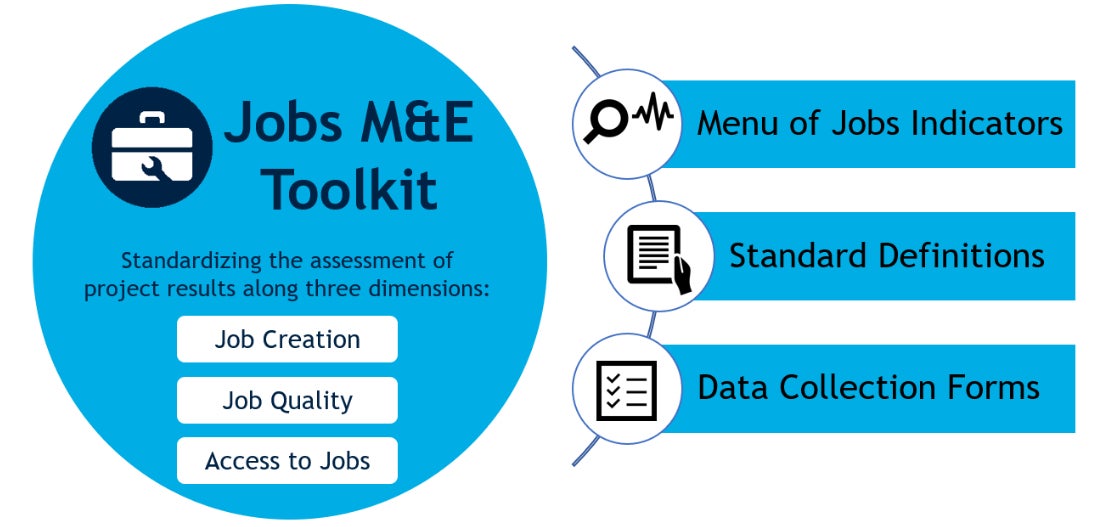
Let’s face it: assessing the results of a development project can be as complex as designing and implementing it. This is particularly true for projects that aim to create more and better jobs for all population groups and often work across sectors: how do we measure the number of newly created jobs through a private sector development project? Or the increase in earnings for young women and men who participated in a skills training, benefited from a coaching, or received stipends to help them move from low to higher quality jobs? Wouldn’t it be great to have a common terminology and definitions, and a set of ready-to-use tools to standardize the measurement of jobs outcomes?
A Toolkit by project teams, for project teams
With this idea in mind, the World Bank Jobs Group has developed a Toolkit on Monitoring and Evaluation (M&E) of Jobs Operations to encourage a more systematic assessment of jobs outcomes in development projects. The toolkit puts the assessment of jobs results at the core of each step in the project cycle, from design and preparation, to implementation and completion: it helps project teams to choose relevant jobs indicators and collect data to inform these indicators without resource-intensive survey efforts. The toolkit draws from the extensive experience of project teams working on jobs projects across sectors, and builds on existing frameworks, guidelines and survey instruments developed by the World Bank and other development partners.
A one-stop-shop with multiple tools
The Jobs M&E Toolkit is a one-stop-shop for jobs measurement at project level and includes several tools, and it is available in both
an interactive and a
PDF version. Some of the highlights include:
- A flexible ‘menu’ of indicators: The toolkit introduces a set of 20 jobs indicators to measure results along the dimensions of job creation, job quality, and access to jobs. Results are measured at the level of the beneficiary types most commonly targeted by jobs-related interventions – individuals, such as job-seekers or self-employed, and firms of any size, operating either in the formal or informal sector. Project teams can select from this ‘menu’ of indicators according to the design of their intervention and expected results related to jobs. Guidance notes help teams make their decision and include actual project examples.
- …with easy-to-use standard definitions: For each of these indicators, the toolkit introduces a standard definition, which is based on internationally recognized sources (ILO, DCED, OECD and other international organizations). This is one of the major benefits of the toolkit, as standardized indicator definitions allow to aggregate and compare data across projects, within or across countries, making sure we don’t compare apples with oranges.
- …supported by short data collection forms that fit country context and capacities: Two simple-to-use data collection forms, targeting individual and firm beneficiaries respectively, allow for reporting on jobs outcomes. Each form provides a set of questions linked to the jobs indicators and follows the standard definitions. Both forms are available in digital (online) and paper (offline) formats: The preferred data collection methodology depends on the number and geographic location of project beneficiaries, the availability of a reliable internet connection, access to digital devices, and the availability of data already produced by the implementing entities as part of their activities.
Follow the World Bank Jobs Group on Twitter @wbg_jobs .



Join the Conversation